Magnetic Field - Definition, Facts, Example, Quiz, FAQ, Trivia
Discover the invisible forces that shape our world through magnetism and magnetic fields!
Magnetic Field Definition
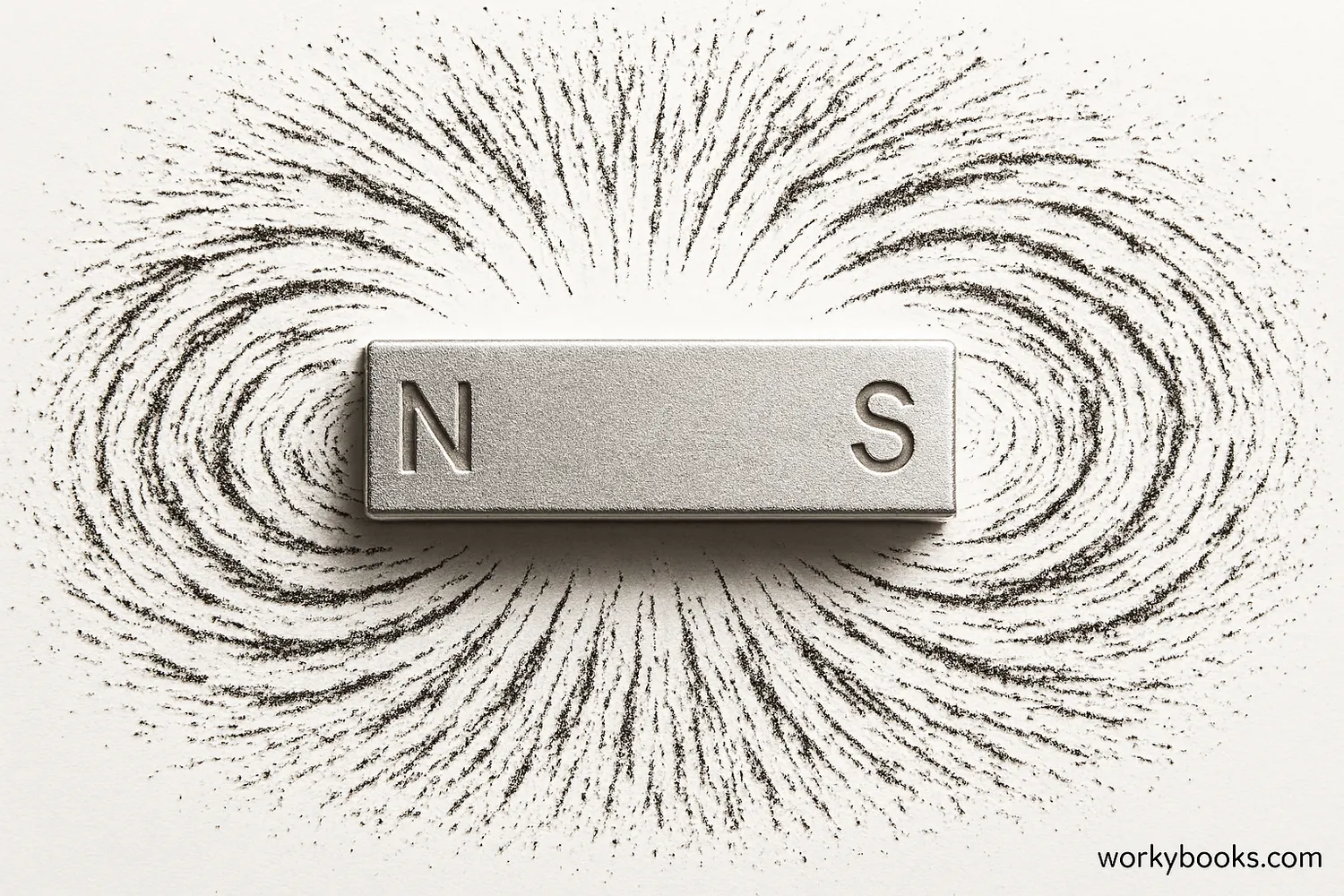
A magnetic field is an invisible force field that surrounds magnets and electric currents. It's what causes magnets to attract certain metals like iron and nickel, and it's responsible for the push and pull forces between magnets.
Magnetic fields are created by moving electric charges. Every electron spinning around an atom's nucleus creates a tiny magnetic field. In most materials, these fields cancel each other out. But in magnets, many of these tiny fields align to create a strong overall magnetic field.
Science Fact!
The strength of a magnetic field is measured in tesla (T) or gauss (G). Earth's magnetic field is about 0.00005 T (or 0.5 G), while a typical refrigerator magnet is about 0.01 T (100 G).
Magnetic Field Lines
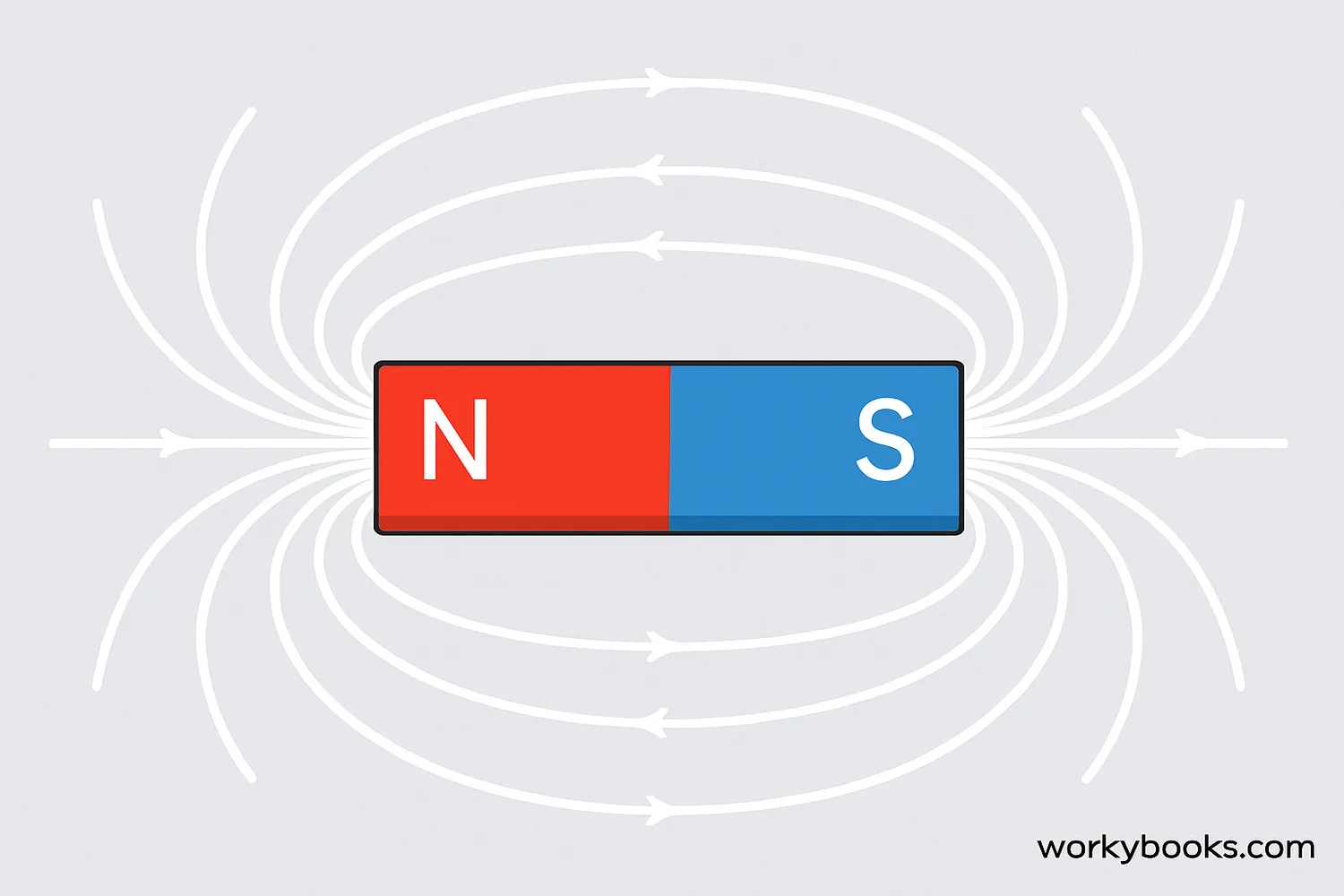
We can't see magnetic fields directly, but we can visualize them using magnetic field lines. These imaginary lines show both the direction and strength of a magnetic field.
Field lines always form closed loops that emerge from the magnet's north pole and enter through the south pole. Where the lines are closer together, the magnetic field is stronger. Where they're farther apart, the field is weaker.
Direction
Field lines show the direction a compass needle would point
Strength
Closer lines indicate a stronger magnetic field
Poles
Lines emerge from north poles and enter south poles
Closed Loops
Field lines always form complete loops
You can see magnetic field lines by sprinkling iron filings on paper placed over a magnet. The filings will align along the field lines, creating beautiful patterns that reveal the invisible magnetic field.
Earth's Magnetic Field
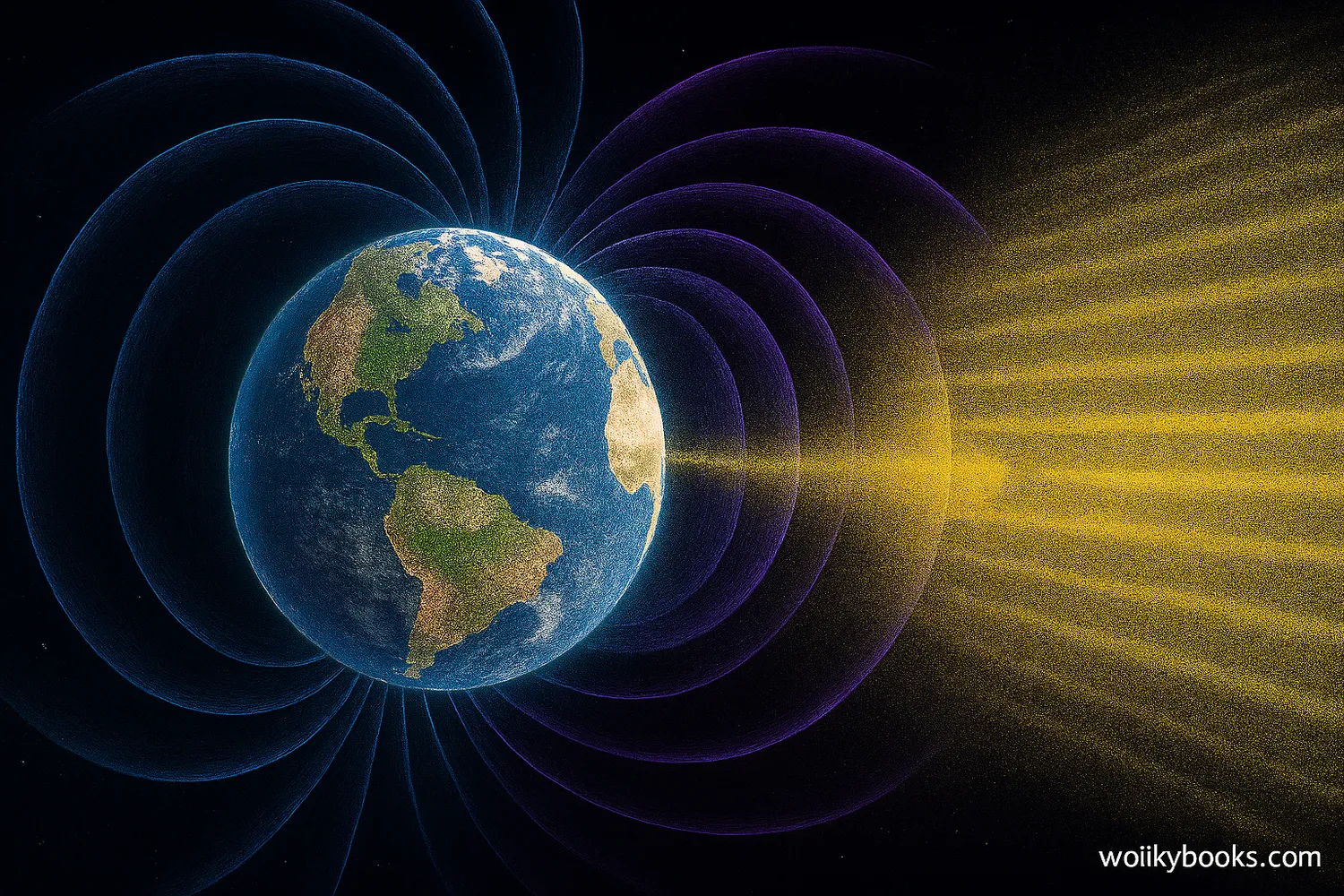
Our planet Earth has its own magnetic field, called the geomagnetic field. It's like there's a giant bar magnet running through the center of the Earth, but it's actually generated by the movement of molten iron in Earth's outer core.
Earth's magnetic field extends far out into space and protects us from harmful solar radiation. It also allows compasses to work and helps many animals navigate during migration.
Magnetic Poles
Earth has north and south magnetic poles that are close to but not exactly at the geographic poles. The magnetic north pole actually moves over time!
Magnetosphere
The region of space dominated by Earth's magnetic field is called the magnetosphere. It deflects most of the charged particles from the solar wind.
Animal Navigation
Many animals including birds, sea turtles, and even some bacteria can sense Earth's magnetic field and use it for navigation during migration.
Electromagnetism

Electromagnetism is the relationship between electricity and magnetism. When electric current flows through a wire, it creates a magnetic field around the wire. This discovery was made by Hans Christian Ørsted in 1820.
By coiling wire around an iron core and passing current through it, we can create an electromagnet. Electromagnets are useful because we can turn them on and off by controlling the electric current.
Applications
Electromagnets are used in many devices including electric motors, generators, MRI machines, and speakers.
Control
The strength of an electromagnet can be controlled by changing the amount of current or the number of wire coils.
The relationship works both ways: just as electric current can create magnetic fields, changing magnetic fields can create electric currents. This is called electromagnetic induction and is how generators produce electricity.
Magnetic Force
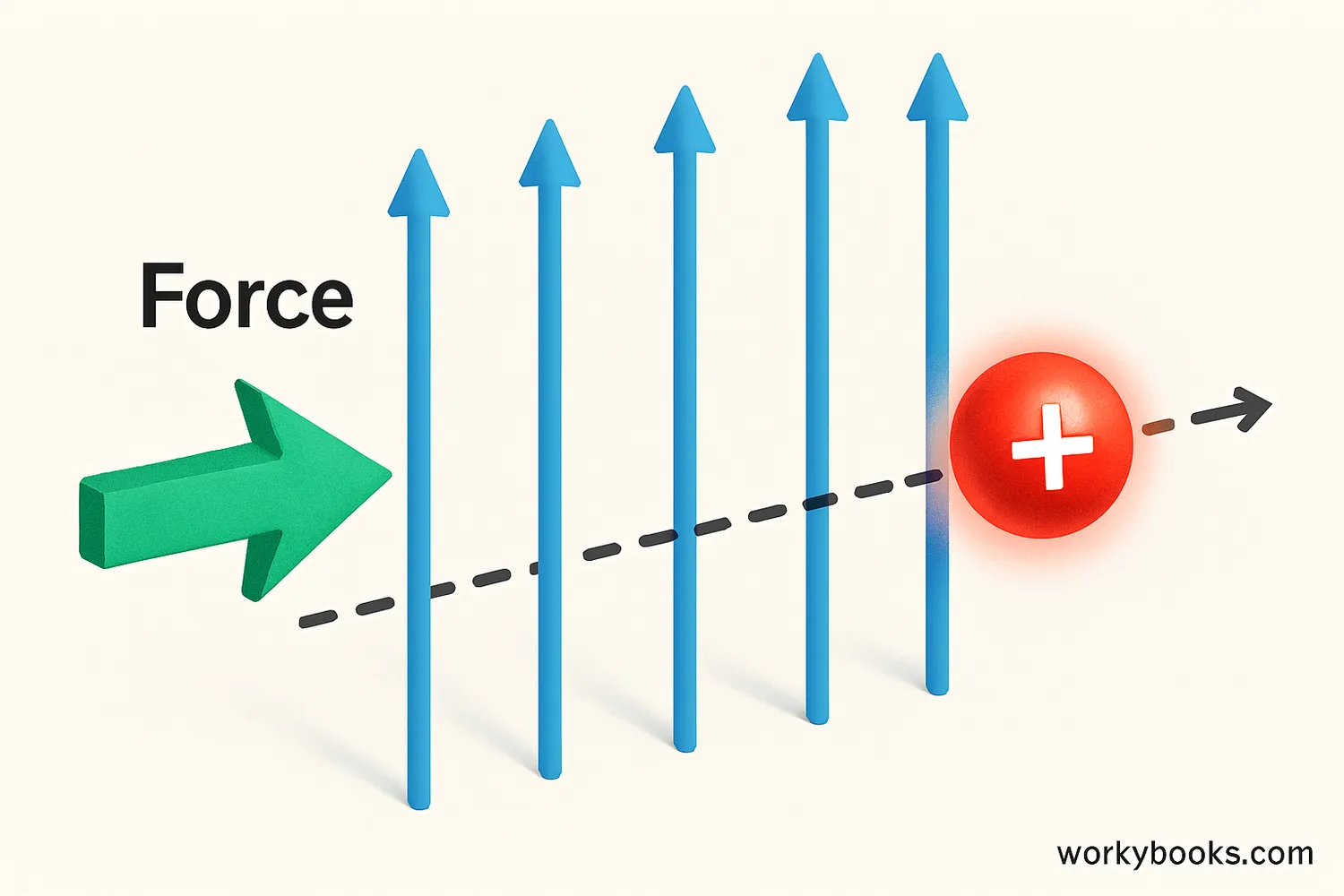
Magnetic force is the push or pull that a magnetic field exerts on magnetic materials or moving electric charges. Unlike electric forces that can both attract and repel, magnetic forces between two magnets can be either attractive or repulsive depending on their orientation.
The magnetic force on a moving charged particle is called the Lorentz force. This force is always perpendicular to both the direction of motion and the magnetic field direction.
Attraction & Repulsion
Unlike poles (north and south) attract each other, while like poles (north-north or south-south) repel each other.
No Magnetic Monopoles
All magnets have both north and south poles. If you break a magnet in half, you get two smaller magnets, each with both poles.
Right-Hand Rule
Physicists use the "right-hand rule" to determine the direction of magnetic force: point your fingers in the direction of the magnetic field, your thumb in the direction of current, and your palm shows the force direction.
Measuring Magnetic Fields
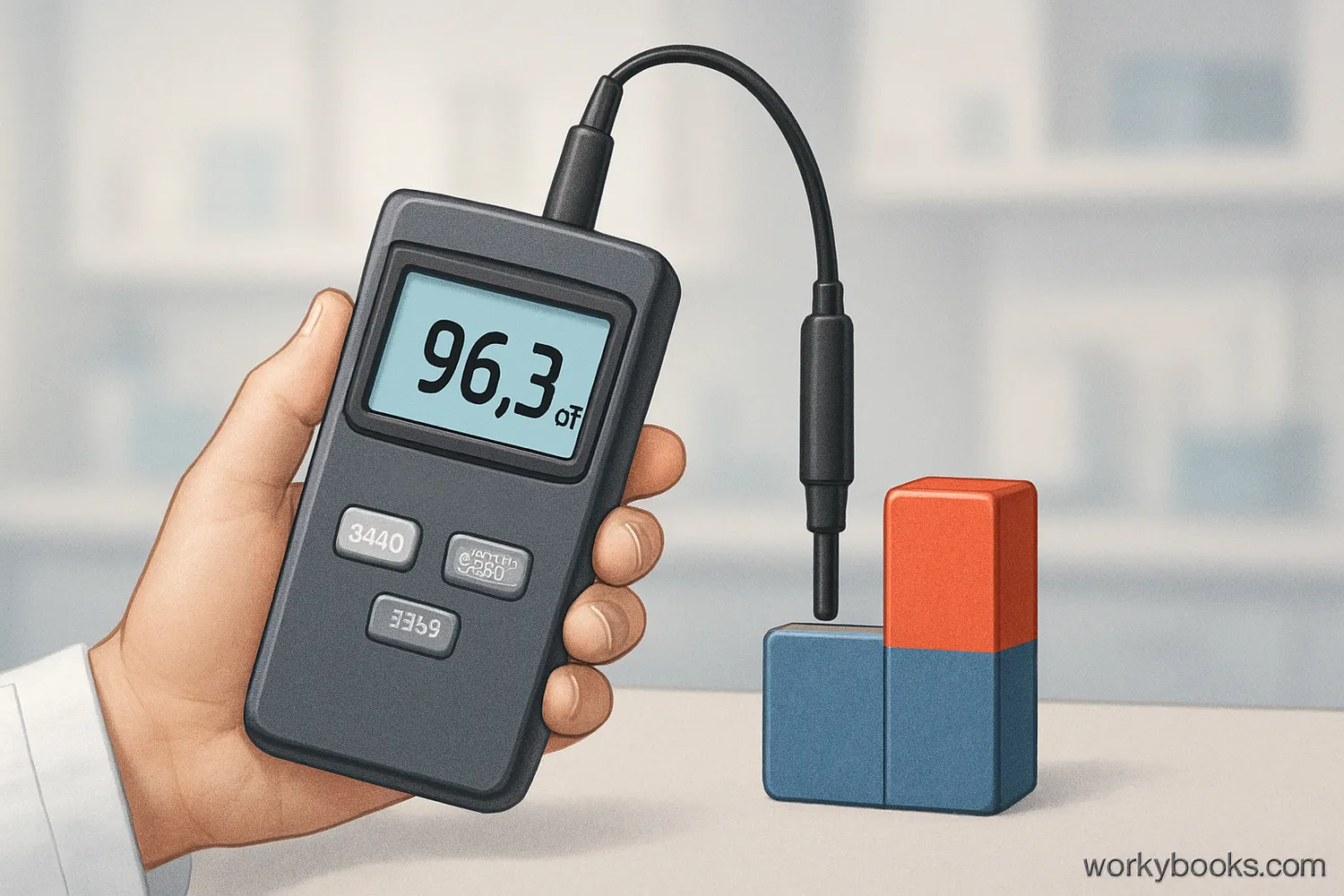
Scientists use special instruments to measure magnetic fields. The strength of a magnetic field is measured in tesla (T) or gauss (G), with 1 tesla equaling 10,000 gauss.
A gaussmeter is a device that measures the strength and direction of magnetic fields. Compasses can also detect magnetic fields by aligning with them, but they don't provide precise measurements of strength.
Gaussmeter
Measures magnetic flux density in gauss or tesla
Compass
Shows direction of magnetic field lines
Hall Effect Sensor
Detects magnetic field strength by measuring voltage
Magnetometer
Precisely measures strength and direction of magnetic fields
Magnetic field measurements are important in many fields including geology (studying Earth's magnetic field), medicine (MRI machines), and engineering (designing electric motors).
Magnetic Field Quiz
Test your understanding of magnetic fields with this quiz! Answer all 5 questions to see how much you've learned.
Frequently Asked Questions
Here are answers to some common questions about magnetic fields:
Science Trivia
Discover some amazing facts about magnetic fields!
Flipping Poles
Earth's magnetic field has reversed many times throughout history—the north and south magnetic poles swap places. The last reversal happened about 780,000 years ago. These reversals are recorded in volcanic rocks and help scientists study Earth's history.
Animal Compasses
Many animals can detect Earth's magnetic field. Birds have special cells in their eyes that may help them "see" magnetic fields during migration. Sea turtles, salmon, and even some bacteria use magnetic fields for navigation.
Extreme Magnets
Neutron stars have the strongest magnetic fields in the universe—up to 100 million tesla. That's strong enough to distort the atoms in your body from thousands of kilometers away! Earth's field is only about 0.00005 tesla in comparison.
Medical Marvels
MRI (Magnetic Resonance Imaging) machines use extremely powerful magnetic fields (up to 3 tesla) to create detailed images of the inside of the human body. These magnets are so strong that they can pull metal objects across the room!


